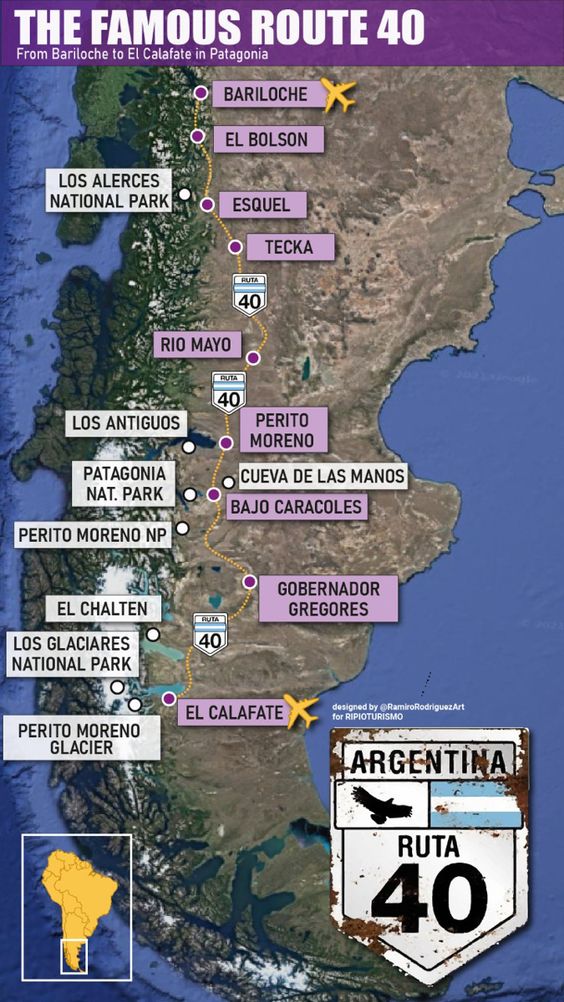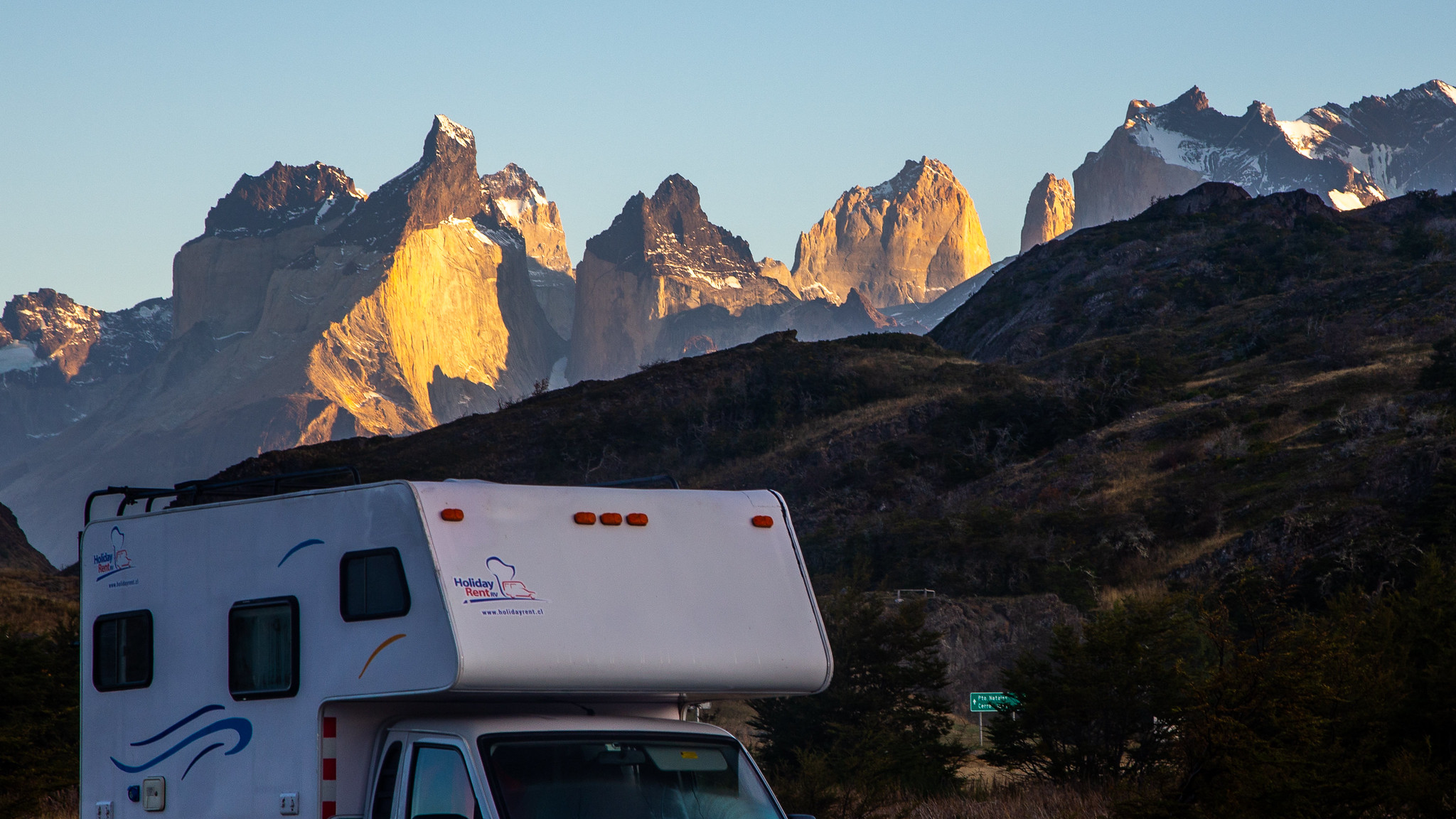Rental Motorhome Patagonia: Exploring Patagonia in a Rental Motorhome
Exploring Patagonia in a Rental Motorhome
Patagonia, a vast and wild region at the southern tip of South America, is a dream destination for adventurers and nature enthusiasts. Spanning across Chile and Argentina, this rugged landscape boasts towering mountains, expansive glaciers, and unspoiled wilderness. What better way to explore this incredible region than in a rental motorhome? In this guide, we’ll take you through everything you need to know to plan your unforgettable journey through Patagonia on wheels.
Table of Contents
Introduction to Motorhome Travel in Patagonia
Why Choose a Motorhome for Patagonia?
Patagonia is known for its remote locations, breathtaking scenery, and unpredictable weather. Traveling by motorhome offers a unique sense of freedom, allowing you to set your own pace and choose your own path. Imagine waking up to the sight of snow-capped mountains, cooking breakfast by a crystal-clear lake, or stargazing from the comfort of your cozy vehicle. A motorhome lets you carry your accommodation with you, which is particularly handy in a region where traditional lodging options can be sparse and pricey.
Best Time to Visit Patagonia
Timing your trip is crucial, as Patagonia’s weather can be extreme. The best time to visit is during the Southern Hemisphere’s spring and summer months, from October to April. During this period, temperatures are milder, and most of the region’s roads and attractions are accessible. However, it’s important to note that weather in Patagonia is famously unpredictable, so be prepared for anything from sunshine to snow, even in summer!
Planning Your Motorhome Adventure
Choosing the Right Motorhome for Your Trip
Selecting the right motorhome is one of the first steps in planning your Patagonian adventure. Consider the size of your group, the level of comfort you desire, and your driving experience. Smaller motorhomes are easier to maneuver on narrow or unpaved roads, while larger models offer more space and amenities. Make sure to rent from a reputable company that provides well-maintained vehicles equipped for Patagonian conditions.
Patagonia Drivers: Discover Patagonia and unique landscapes with the freedom of a great adventurer. Become a great explorer, exploring every corner of its forests, mountains and lakes, surprising you at every kilometer.
Ushuaia Rent: Ushuaia Rent is a Limited Work Cooperative, founded and formed by trained professionals specialized in the rental of Cars, Mountain Bikes, 4×4 Pick ups, Kayaks, Motorhomes and Campers.
Important Documents and Requirements
Before hitting the road, ensure you have all necessary documents in order.
Driving License and Insurance
You’ll need a valid driver’s license, and most rental companies also require an International Driving Permit (IDP). Additionally, check that your rental agreement includes comprehensive insurance coverage, or purchase additional coverage for peace of mind.
Vehicle Permits and Border Crossings
If you plan to cross the border between Chile and Argentina, you’ll need specific permits for your vehicle. Rental companies can often assist with obtaining these, but it’s best to confirm this ahead of time to avoid any roadblocks during your journey.
Top Routes and Destinations in Patagonia
The Carretera Austral Route
One of the most famous routes in Patagonia is the Carretera Austral in Chile, stretching over 1,200 kilometers through some of the region’s most stunning landscapes.
Highlights Along the Carretera Austral
From the turquoise waters of General Carrera Lake to the towering fjords of Queulat National Park, the Carretera Austral is a showcase of natural beauty. Key stops include the marble caves at Puerto Río Tranquilo and the breathtaking views from Cerro Castillo.
Ruta 40: Argentina’s Epic Road

On the Argentine side, Ruta 40 runs parallel to the Andes, offering dramatic scenery and access to iconic Patagonian destinations.
Key Stops on Ruta 40
Highlights include the Fitz Roy range near El Chaltén, the Perito Moreno Glacier in Los Glaciares National Park, and the vibrant city of Bariloche. This route also provides a glimpse into Patagonia’s rich cultural heritage, with opportunities to visit local estancias (ranches) and experience traditional gaucho life.
Must-Visit National Parks
Patagonia is home to some of the world’s most renowned national parks.
Torres del Paine National Park
Located in Chilean Patagonia, Torres del Paine is famous for its towering granite peaks, glacial lakes, and diverse wildlife. The park offers a variety of camping options and is a must-visit for any motorhome traveler.
Los Glaciares National Park
This Argentine park is known for the mighty Perito Moreno Glacier, which you can explore by boat or on foot. The park also offers excellent hiking trails, including routes around the majestic Fitz Roy mountain.
What to Pack for Your Motorhome Journey
Essential Gear and Supplies
When packing for a motorhome trip through Patagonia, think of it as prepping for an extended camping trip. Essentials include a reliable GPS or offline maps, cooking equipment, and a basic tool kit for minor repairs. Also, stock up on non-perishable food items, water, and a first aid kit.
Clothing and Weather Preparation
Layering is key when it comes to dressing for Patagonia. Bring thermal underwear, waterproof jackets, and sturdy hiking boots. Don’t forget to pack gloves, hats, and other accessories for colder temperatures, even during the summer months.
Navigating the Roads of Patagonia
Road Conditions and Safety Tips
Patagonia’s roads vary from well-paved highways to rugged dirt tracks. Drive cautiously, especially on gravel roads where conditions can change quickly due to weather. Keep an eye out for wildlife, such as guanacos and rheas, which often wander onto the roads.
Gas Stations and Refueling Tips
Gas stations can be few and far between, especially on remote routes like the Carretera Austral and Ruta 40. Always refuel whenever you have the chance and consider carrying a spare fuel canister for emergencies.
Camping in Patagonia with a Motorhome
Free Camping vs. Paid Campsites
While free camping is possible in many areas, designated campsites offer facilities like showers, electricity, and waste disposal. Paid campsites also provide a safer environment and help support local communities.
Tips for Finding the Best Campsites
Use apps like iOverlander to find recommended campsites, both paid and free. National parks often have designated camping areas, which are ideal for those looking to immerse themselves in nature.
Wildlife and Nature Encounters
Animals You Might See Along the Way
Patagonia is a haven for wildlife lovers. Keep an eye out for Andean condors soaring overhead, or glimpse a puma if you’re lucky. Guanacos, foxes, and numerous bird species are also commonly spotted.
Responsible Wildlife Viewing Tips
Always observe animals from a distance and avoid feeding or disturbing them. Respect wildlife and their habitats by sticking to marked paths and keeping noise to a minimum.
Managing Challenges on the Road
Dealing with Weather Changes
Patagonia’s weather can shift rapidly. Always check forecasts before setting out and be prepared to adjust your plans. Wind is a constant companion, so ensure your motorhome is parked
securely, especially overnight.
Handling Mechanical Issues
Breakdowns are a reality of any road trip, and even more so in remote regions like Patagonia. Carry a basic repair kit and familiarize yourself with common fixes, such as changing a tire or jump-starting the engine. For major issues, roadside assistance is available but may take time due to the region’s remoteness.
Cost of Renting a Motorhome in Patagonia
Rental Prices and Budgeting Tips
Motorhome rental prices vary depending on the season, vehicle size, and rental company. On average, expect to pay between $100 to $200 per day. Booking in advance can help secure lower rates, and don’t forget to factor in additional costs like fuel, campsite fees, and insurance.
Hidden Costs to Consider
Be aware of potential hidden costs, such as mileage limits, extra charges for additional drivers, and fees for crossing borders. Always read the fine print of your rental agreement to avoid surprises.
Benefits of a Motorhome Over Traditional Travel
Flexibility and Freedom
Traveling by motorhome offers unparalleled flexibility. You’re not tied to hotel check-ins or rigid schedules, allowing you to explore Patagonia at your own pace. If you find a spot you love, you can stay longer; if not, you can easily move on.
Comfort and Convenience
Modern motorhomes come equipped with kitchens, beds, and bathrooms, providing a level of comfort that’s hard to match with traditional camping. It’s like having your own tiny, mobile home in the middle of the wilderness.
Environmental Impact and Sustainable Travel
Eco-Friendly Tips for Motorhome Travelers
Traveling responsibly is key to preserving Patagonia’s natural beauty. Use reusable containers, minimize waste, and choose campsites that practice sustainable management.
Leave No Trace Principles
Always follow Leave No Trace principles: pack out all trash, avoid disturbing wildlife, and stick to designated trails. Respect local communities and contribute positively by supporting local businesses.
FAQs
Is it safe to travel in a motorhome in Patagonia?
Yes, traveling by motorhome in Patagonia is generally safe. However, always take standard precautions such as securing your vehicle, being aware of road conditions, and respecting local laws.
Do I need a special license to drive a motorhome in Patagonia?
Most rental companies require a valid driver’s license and an International Driving Permit (IDP). Check with your rental provider for specific requirements.
How much does it cost to rent a motorhome in Patagonia?
Rental prices vary, but you can expect to pay between $100 to $200 per day, depending on the season and vehicle type.
What are the best months to travel to Patagonia in a motorhome?
The best time to travel is from October to April, during the Southern Hemisphere’s spring and summer, when the weather is milder and most routes are accessible.
Are there any restrictions on where I can park my motorhome?
While you can park in many places, it’s best to use designated campsites for safety and convenience. Always respect local regulations and avoid parking in restricted or protected areas.
